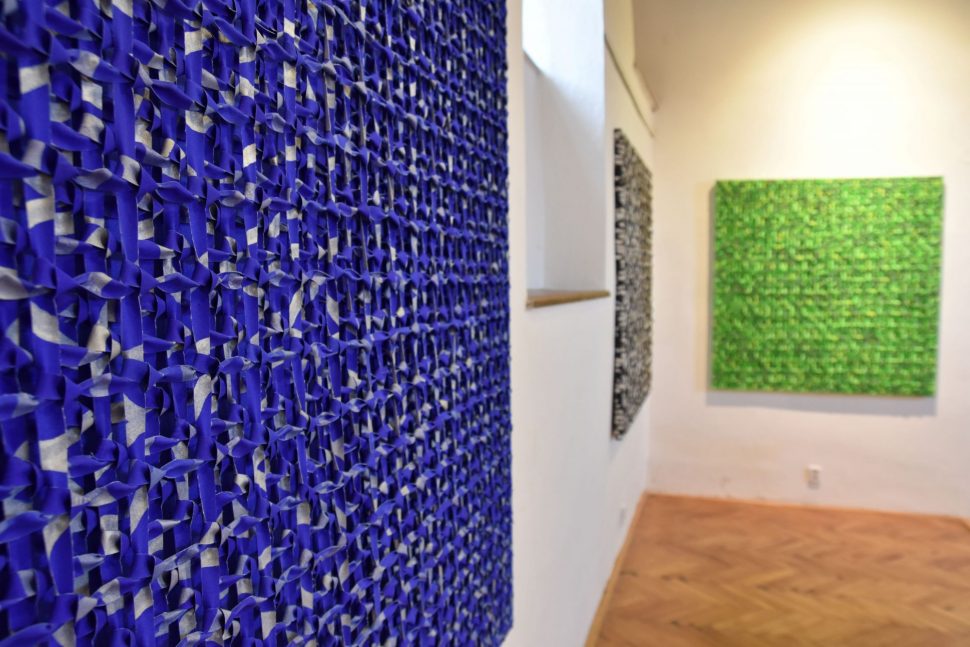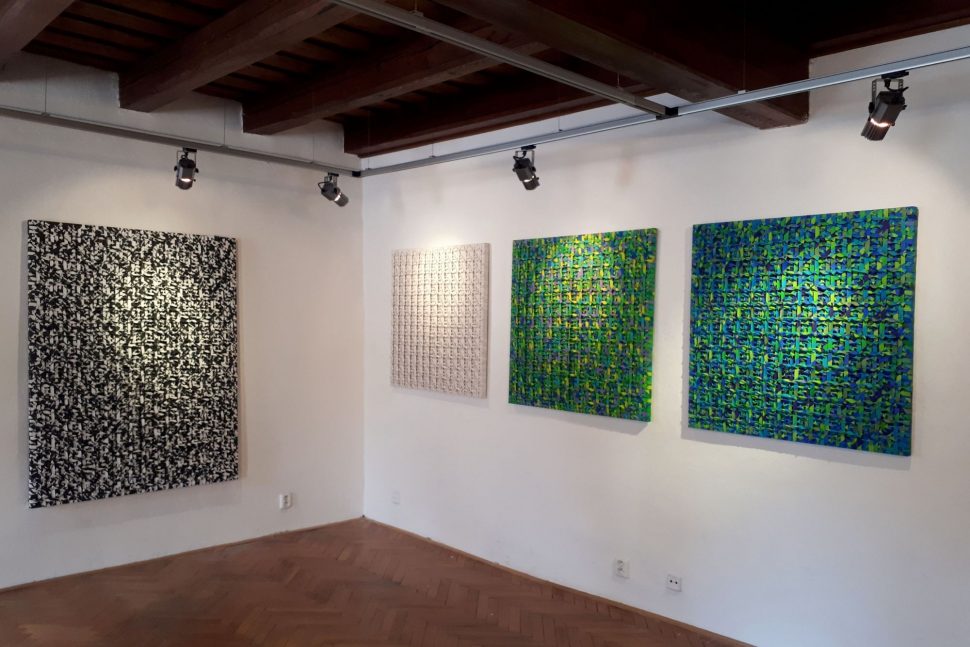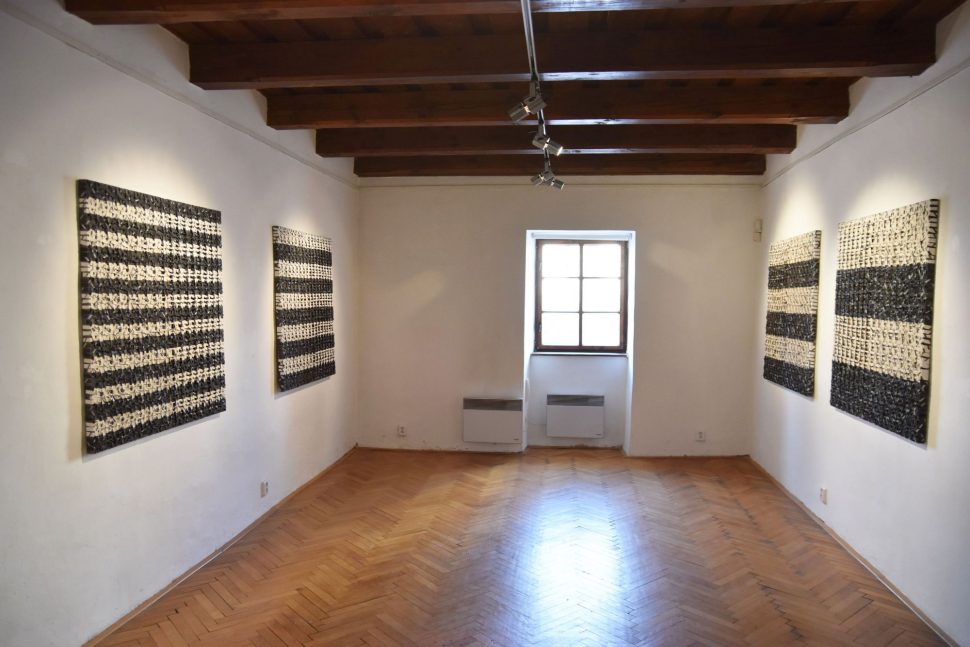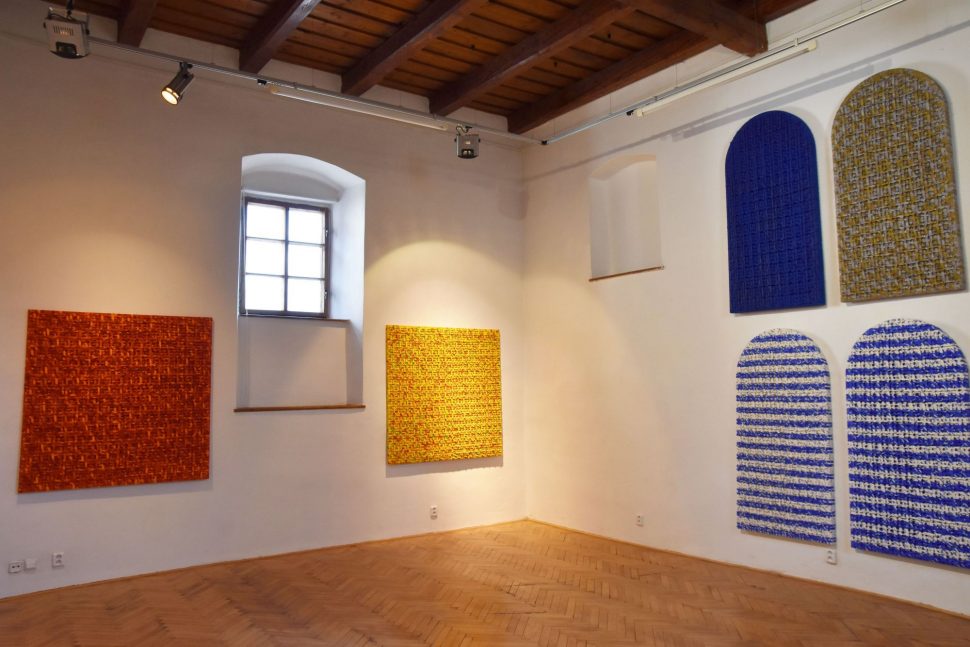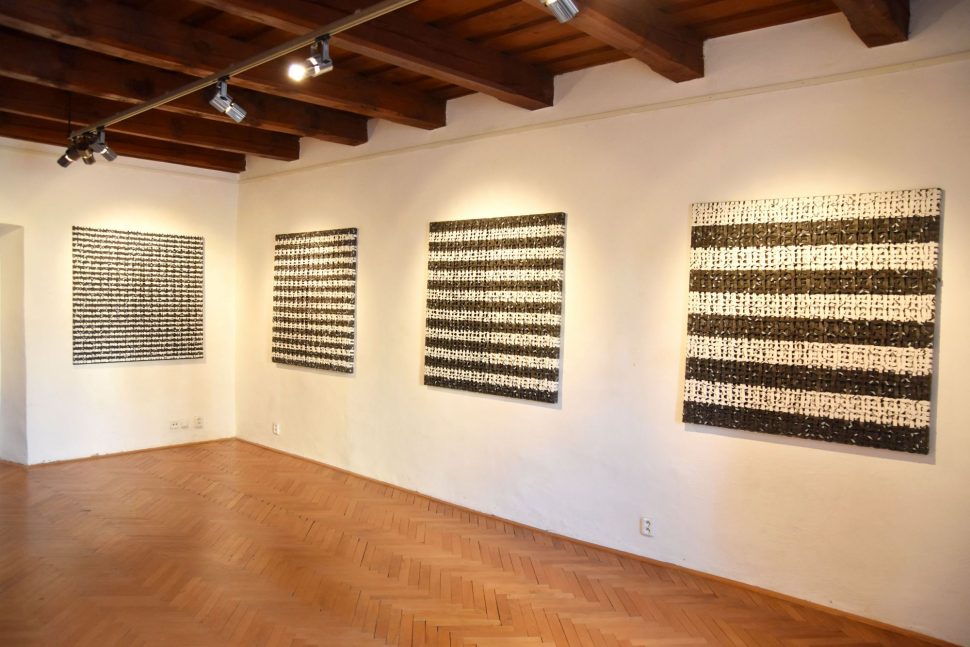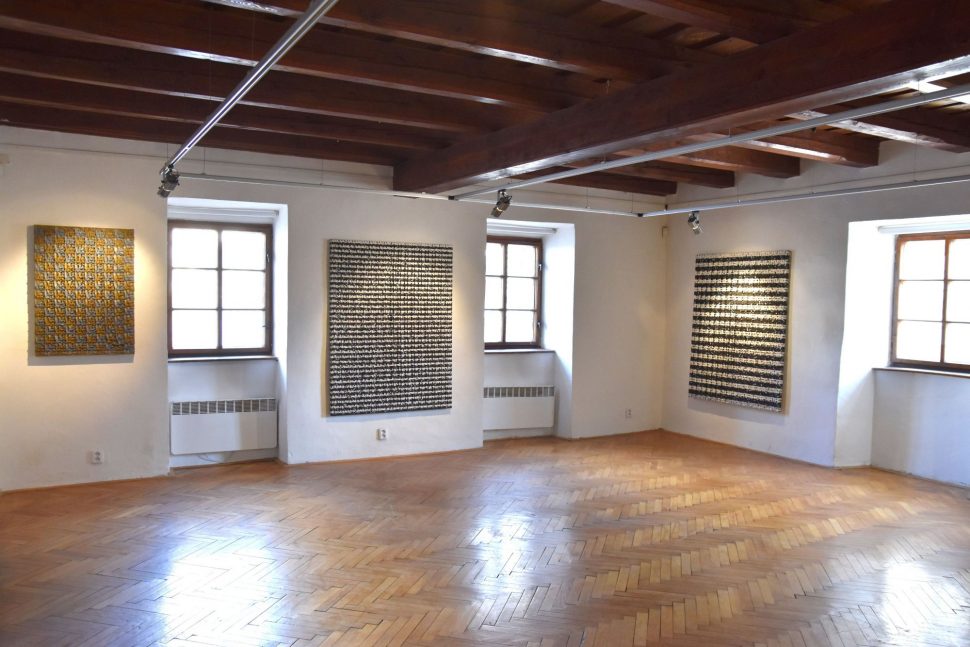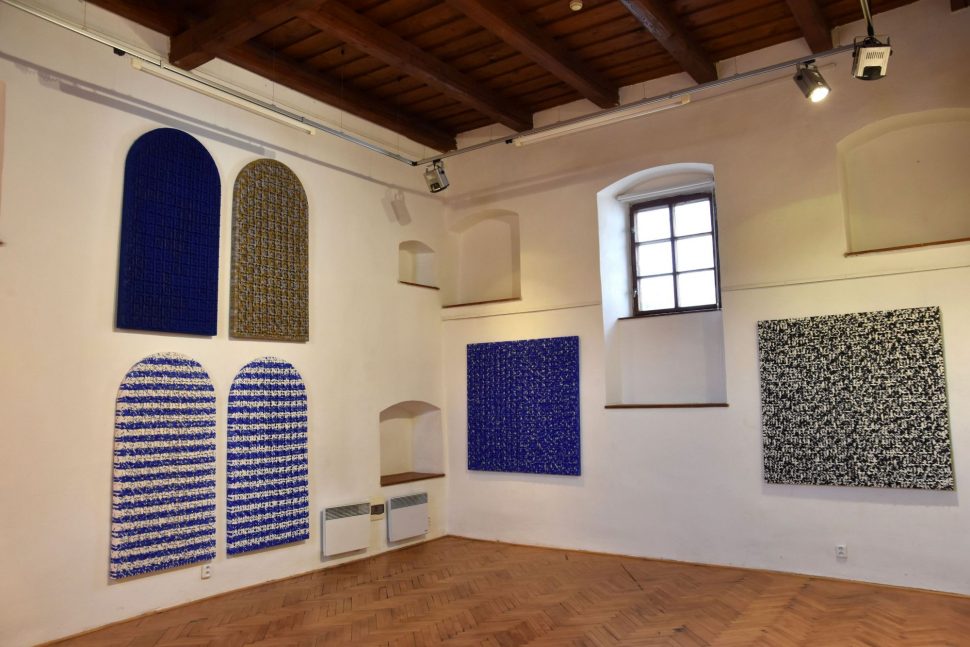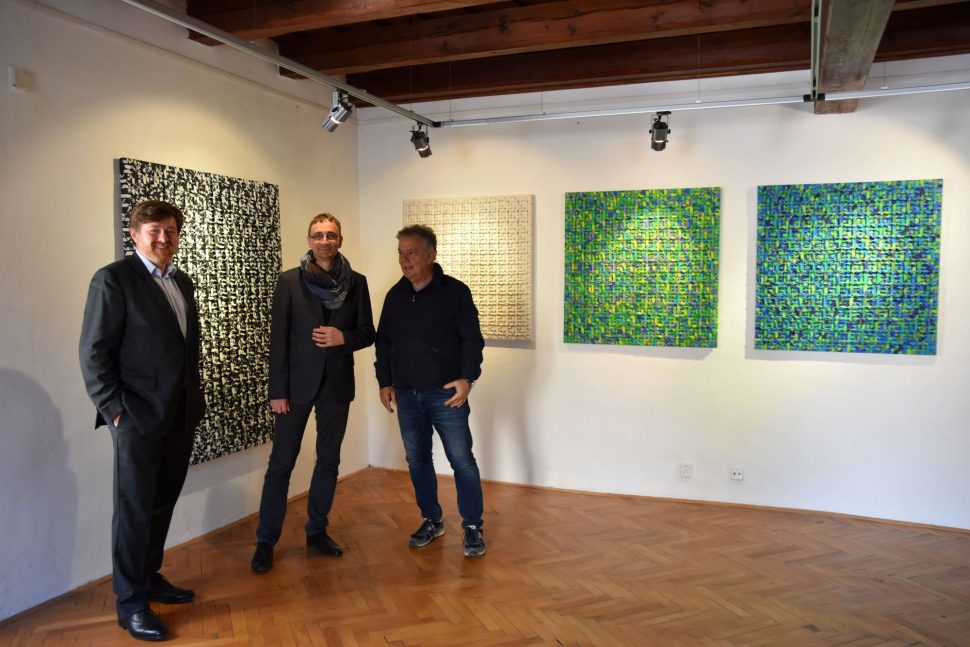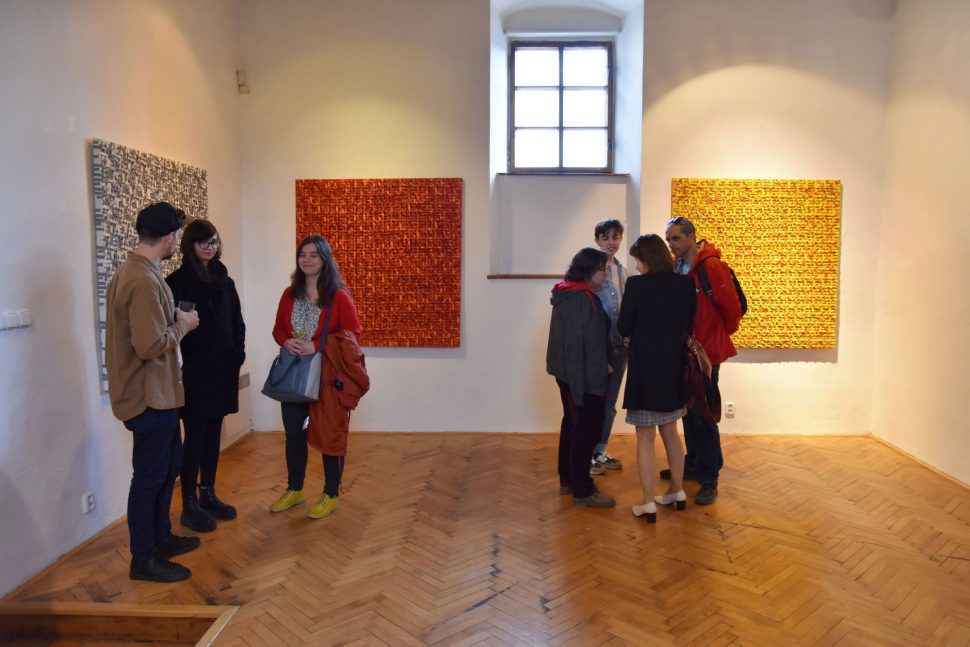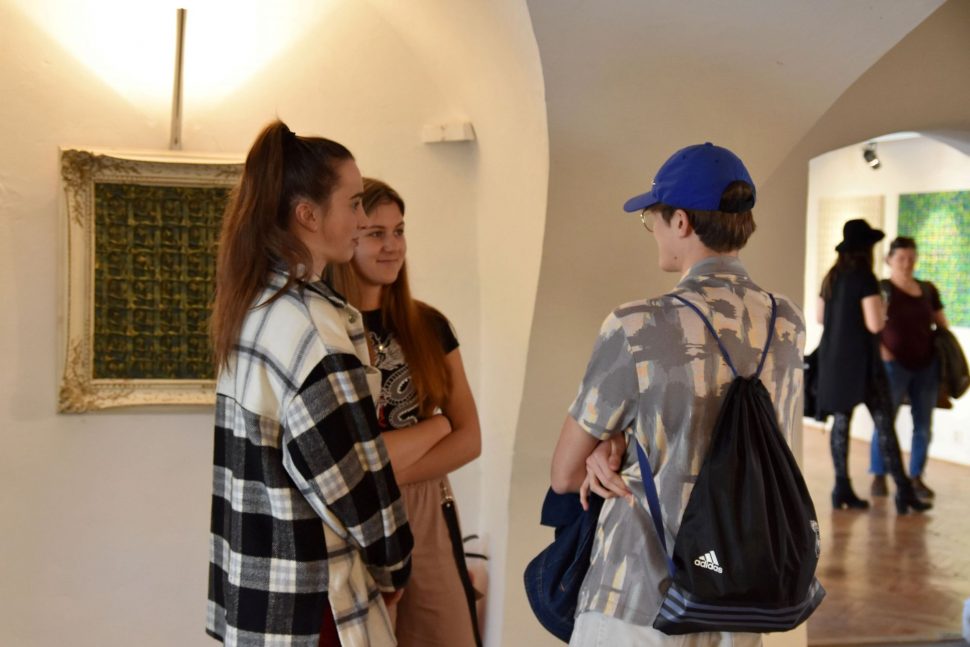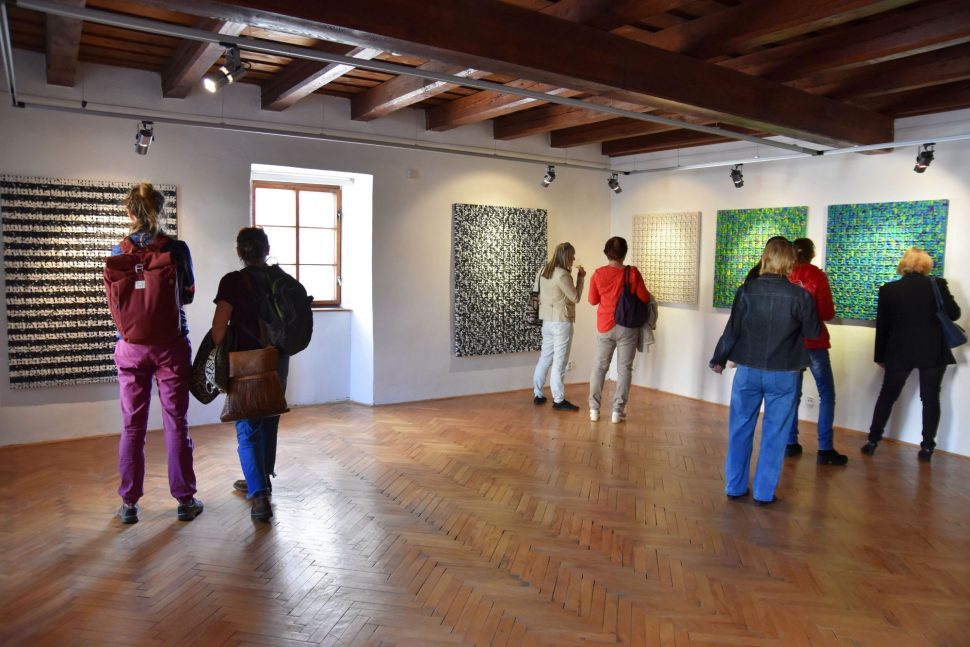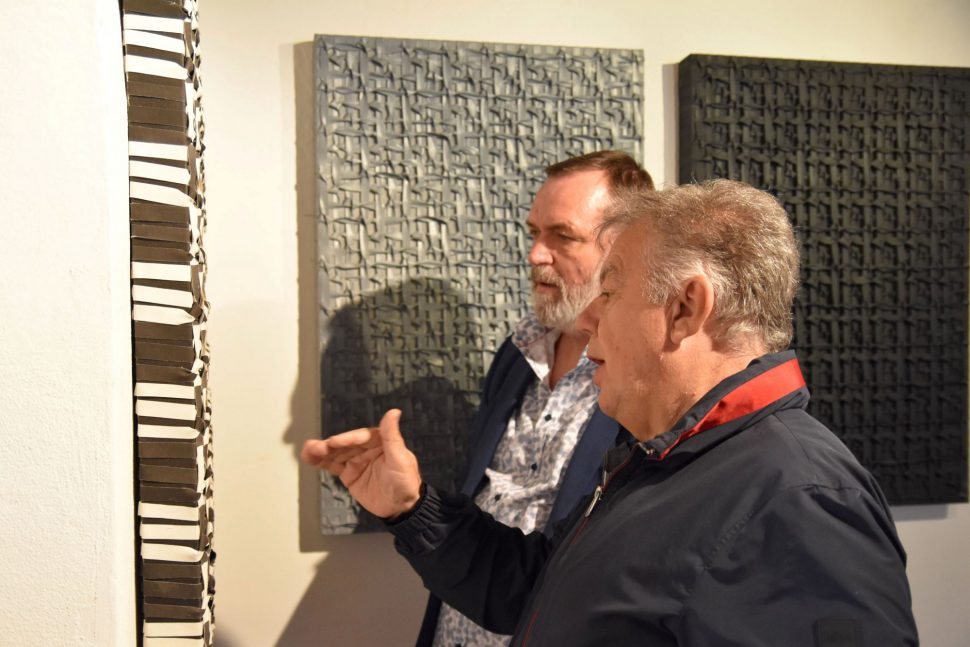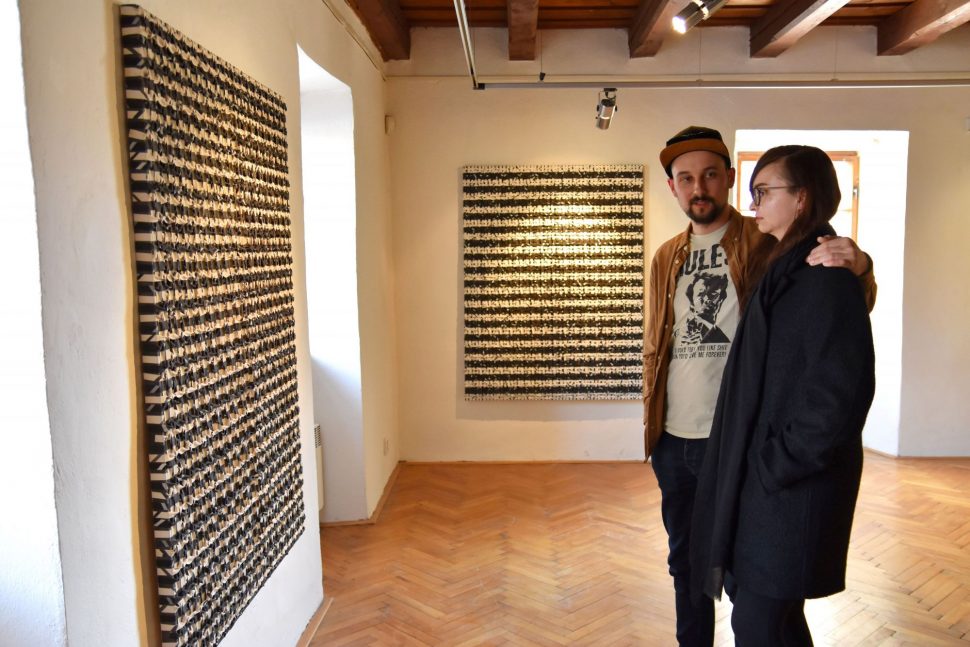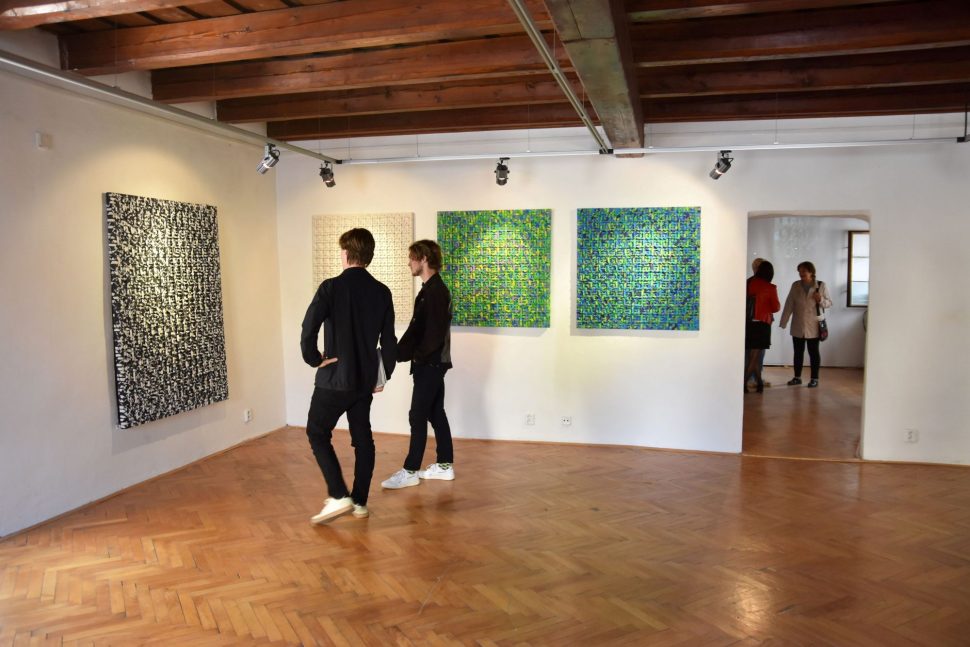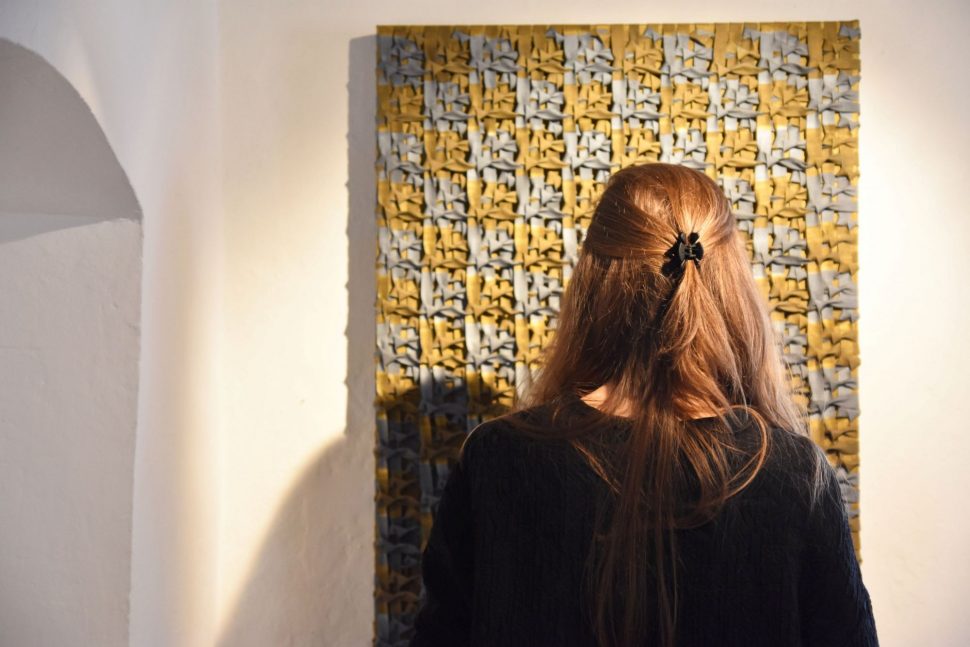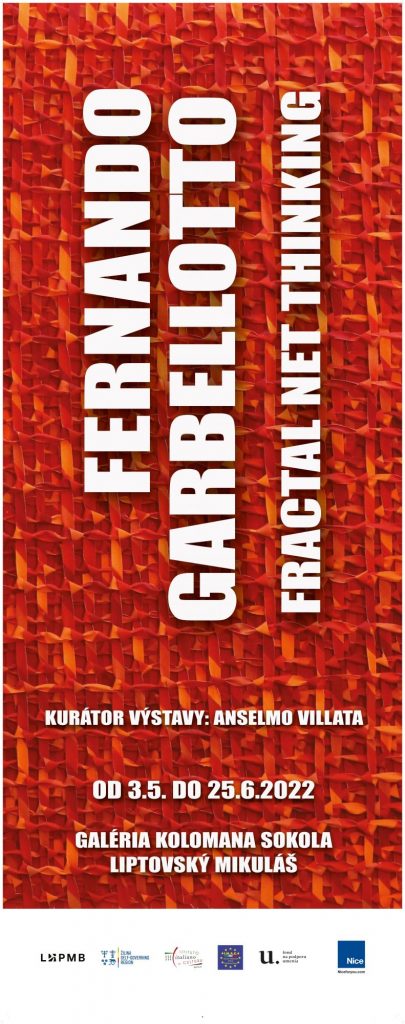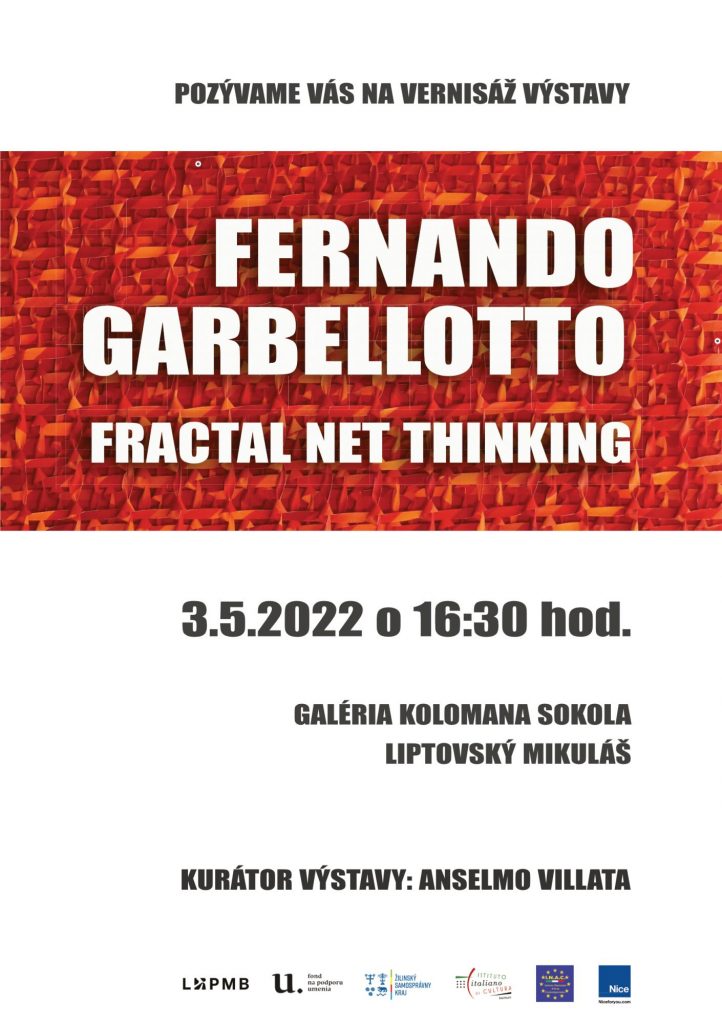FERNANDO GARBELLOTTO - FRACTAL NET THINKING
Organizátor/ Organizer: Liptovská galéria P. M. Bohúňa v Liptovskom Mikuláši v zriaďovateľskej pôsobnosti Žilinského samosprávneho kraja/ The Peter Michal Bohúň Gallery in Liptov in the founding competence of the Žilina self-governing region
Názov výstavy/ Title: Fernando Garbellotto - Fractal Net Thinking
Miesto/ Place: Galéria Kolomana Sokola/ Koloman Sokol Gallery
Trvanie výstavy/ Duration: 3.5. - 25.6.2022 / 3rd of May - 25th of June 2022
Otvorenie výstavy/ Opening of the exhibition: 3.5.2022 o 16:30 hod./ May 3rd 2022 at 4:30 P.M.
Kurátor výstavy/ Curator: Anselmo Villata
Výstavný projekt z verejných zdrojov podporil Fond na podporu umenia. / Supported using public funding by Slovak Arts Council.
Scroll down for English
Myslenie cez fraktálne siete
"Tu, na hranici toho, čo poznáme, v kontakte s Oceánom toho, čo nepoznáme, hľa, záhada sveta a krása sveta jasne žiaria zanechávajúc nás bez dychu." (Carlo Rovelli)
Významnou medzerou, ktorá odlišuje jednoduchého pozorovateľa od bádateľa, je práve hranica, ktorú si Carlo Rovelli predstavuje medzi tým, čo je známe a čo nie je, vymysleným miestom, v ktorom niektorí vidia čaro toho, čo nie je známe, a iní naopak toho, čo nie je ešte známe.
Fascinujúci a podmanivý obraz „výskumníka poznania“ nás stavia pred pomerne veľký súbor postáv, ktoré možno takto identifikovať, od vedcov, lekárov, matematikov, historikov, antropológov, psychológov, astronómov až po umelcov.
Ako ďaleko však môžu títo výskumníci zájsť a ako ďaleko chcú zájsť? Aké nástroje chcú používať?
Akokoľvek rétorické sa môžu zdať, tieto otázky namiesto toho znamenajú dosť hlbokú úvahu o svete vedomostí, o systematizácii vedomostí a o ich šírení a výskume. Už v časoch Aristotela sa uskutočnil pokus identifikovať a usporiadať odvetvia ako fyzika (doslova „prírodné veci“) alebo metafyzika (doslova „to, čo príde po/za prírodnými vecami“), prechádzajúci cez Spencera, pre ktorého bola veda „organizovanými znalosťami“. Toto sú určite dôležité prvky evolúcie, ktorá trvala stáročia, napriek tomu, že zanechala niektoré prvky, ktoré niekedy brzdili rozvoj, ani nie tak jednotlivých disciplín, ako skôr vedomostí v globálnom zmysle: nadmerné oddelenie medzi rôznymi oblasťami, v kombinácii so stále rastúcou špecializáciou, vyústilo do vytvárania skutočných hraníc, ktoré niekedy nie sú veľmi priepustné. Príspevok Ingetrauta Dahlberga pomohol určiť inovatívny model známy ako systém organizácie znalostí – /knowlwdge organization system/ - KOS (ktorý možno v podstate zredukovať na grafy, v uzloch ktorých sa nachádzajú pojmy), ktorý sa v širšom zmysle otvára súhrnu vedomostí, k riadeniu vedomostí ako celku a k štruktúrovaniu sieťového myslenia, ktoré sa lepšie prispôsobuje zložitosti sveta, berúc do úvahy neustály pokrok výskumu vo všetkých oblastiach poznania.
Fernando Garbellotto dokázal v priebehu svojej investigatívnej činnosti dokázať, že je jedným z tých, ktorí stoja na hranici, ktorú vytýčil Carlo Rovelli, a snažia sa ju prelomovým spôsobom posunúť vpred vďaka húževnatému výskumu a spracovateľskej činnosti; pozorovacej a študijnej aktivite, ktorá – so silou a presvedčením – je založená na koncepte sieťového myslenia, ktoré štrukturuje samotné myšlienky, teórie a interpretácie uvažovaním o veľmi zložitých otázkach, prostredníctvom súboru rôznych oblastí vedomostí, ktoré, keď sú prepojené, môžu poskytnúť odpovede alebo otvoriť nové oblasti výskumu podporujúce pokrok.
Prepojenie je konečným kľúčom k myšlienke a práci Majstra sietí, ktoré sú dokonalou konkrétnou realizáciou jeho spôsobu konania a myslenia.
Dichotómia siete je znakom myšlienkovej štruktúry, ktorá je zároveň jednoduchá a štruktúrovaná: komplexná, ak sa skúma nesprávnymi nástrojmi, ale mimoriadne jasná a zrozumiteľná, ak sa skúma so správnou „lupou“.
Pojem siete je transverzálny, od technológie cez sociológiu až po najnovšie štúdie o čase a časopriestorovom vzťahu, vyjadruje a uľahčuje pochopenie zložitosti, čím sa rodia vzťahy interakcie a participácie s verejnosťou.
Z jednoduchej podpory preberá plátno novú úlohu, ktorá tiež umožňuje prelomiť dvojrozmernú obrazovú väzbu: ak na jednej strane Lucio Fontana otvoril lomku smerom k priestoru za plátnom, Fernando Garbellotto nás na druhej strane zavedie priamo do hlbín, teda až k samotnému základu plátna, vytvárajúc formu pred obrazovou oporou z útku a osnovy, ktorá sa prostredníctvom pigmentov podieľa na tvorbe diela. Obraz je teda študovaný, prepracovaný a nanovo navrhnutý od základnej formy až po jej najkompozitnejšiu realizáciu.
A odtiaľ, cez štúdie a analýzy Mandelbrotových výskumov, sa pozornosť sústreďuje na formu ako čistý a opakovateľný prvok, ktorý sa rozvíja a vyjadruje v morfologickej rozmanitosti; vízia fraktálnej geometrie, ktorá presahuje tú euklidovskú, je dokonalým nástrojom na zobrazenie prírody v prvom rade, ako aj všetkých pozorovateľných javov, vyhýbajúc sa prílišným zjednodušeniam a poskytujúcim neoceniteľnú príležitosť na formálne a konceptuálne členenie výtvarného spracovania.
Preto sa čítanie diel Fernanda Garbellotta môže rozvíjať na rôznych úrovniach, rovnako ako jeho špekulácie, a jeho diela sú realizované ako komplexné systémy skladajúce sa z rôznych prvkov, uzlov a sietí; tak isto reflexie, ktoré sú ich teoretickým základom, sú myšlienkové systémy, ktorých uzly sú styčným bodom viacerých disciplín a analytickými náznakmi, ktoré formujú komplex.
Uzol je teda miestom, kde sa stretávajú minimálne dva faktory, z ktorých sa rodí niečo, čo by inak neexistovalo, čo zdôrazňuje hodnotu vzťahu a vzájomného prepojenia medzi jednotlivými prvkami (ktoré možno diverzifikovať až po vzťah medzi rôznymi systémami): realita je opäť v centre presného pozorovania a je podporovaná pokročilými nástrojmi, ktoré sa stále študujú a experimentujú, ako sú teórie kvantovej fyziky týkajúce sa vzťahu medzi pozorovateľom a pozorovaným, ku kvantovej spleti, vedúcej k ešte hlbším otázkam o realite a existencii.
Príroda, skúmanie sveta a jeho zákonitostí, akútne pozorovanie sociálnych a kultúrnych javov sú prvky, ktoré sú súčasťou komplexnej siete myšlienok, ktoré Garbellotto rozvíja pri interpretácii všetkého, čo nás obklopuje, poskytujúc akútne čítanie – nikdy nebrané ako samozrejmosť - je hľadanie a nachádzanie prepojení, ktoré môžu poskytnúť pevné a presné odpovede na univerzálne otázky a udržateľné smerovanie do budúcnosti (ako sú úvahy o hlbokej ekológii), médiom je umenie, maľba vyjadrená starostlivým estetickým a expresívnym výskumom, ktorý spája pôvab a pôžitok s inováciou a neustálym vývojom, opierajúc sa o hlbokú znalosť histórie a vlastných koreňov, ktoré sú umocnené ukazovaním na nové cesty, ktorými sa treba vydať, bez toho, aby ste uviazli v slávnej minulosti, ktorú by však bolo nesprávne pokúšať sa znovu navrhnúť v súčasnosti.
Anselmo Villata
ENG:
Fractal Net Thinking
“Here, on the borderline of what we know, in contact with the Ocean of what we do not know, lo and behold, the mystery of the world and the beauty of the world shine brightly leaving us breathless.” (Carlo Rovelli)
The significant gap that distinguishes the simple observer from the researcher is precisely the boundary that Carlo Rovelli imagines between what is known and what is not, an imagined place in which some see the charm of what is not known and others, instead, what is not yet known.
Fascinating and captivating, the image of the “explorer of knowledge” places us in front of a rather huge set of figures that can be thus identified, ranging from scientists, doctors, mathematicians, historians, anthropologists, psychologists, astronomers, and right up to artists.
But how far can these researchers go and how far do they want to go? What tools do they want to use?
However rhetorical they may seem, these questions imply, instead, a rather deep reflection on the world of knowledge, on the systematization of knowledge and on its dissemination and research. As early as the time of Aristotle, an attempt was made to identify and order branches such as physics (literally “natural things”) or metaphysics (literally “what comes after/beyond natural things”), passing through Spencer, for whom science was “organized knowledge”. These are certainly important elements of an evolution that spanned the centuries, despite leaving some elements that sometimes held back the development, not so much of individual disciplines, as of knowledge in a global sense: the excessive separation between the different fields, combined with an ever-growing specialization, resulted in the creation of real boundaries, which are sometimes not very permeable. The contribution of Ingetraut Dahlberg helped to determine an innovative model, known as knowledge organization system - KOS (which can be essentially reduced to graphs, at the nodes of which concepts are located), which opens in a broader sense to the totality of knowledge, to the management of knowledge as a whole and to a structuring of a netlike thought that better adapts to the complexity of the world, taking into account the continuous progress of research in all fields of knowledge.
In the course of his investigative activity, Fernando Garbellotto has been able to prove that he is one of those who stand on the borderline traced by Carlo Rovelli and seeks, in a groundbreaking manner, to move it forward thanks to a tenacious research and re-elaboration activity; an observation and study activity that - with strength and conviction - is based on that concept of netlike thought that structures both thoughts themselves, theories and interpretations by reasoning on highly complex issues, through a set of different branches of knowledge that, when connected, can give answers or open to new fields of research that promote progress.
Interconnection is the ultimate key to the thought and work of the Master of nets, which are the perfect concrete realization of his way of acting and thinking.
The dichotomy of the net is the emblem of a structure of thought that is at the same time simple and structured: complex if investigated with the wrong tools, but extremely clear and intelligible if explored with the correct “magnifying glass”.
The concept of net is a transversal one that from technology to sociology, up to the most recent studies on time and the space-time relationship, expresses and facilitates the understanding of complexity, giving birth to relationships of interaction and participation with the public.
From a simple support, the canvas takes on a new role that also allows breaking the two-dimensional pictorial bond: if, on the one hand, Lucio Fontana opened a slash towards the space behind the canvas, Fernando Garbellotto, on the other, takes us right into the depths, i.e. to the very base of the canvas itself, recreating the form before the pictorial support, made of weft and warp, which participates - through the pigments – in the creation of the work. The painting is thus studied, reworked and re-proposed right from the essential form, up to its most composite realization.
And from here, through the studies and analysis of Mandelbrot’s research, attention is focused on form as a pure and repeatable element that develops and expresses itself in a morphological variety; the vision of fractal geometry, which goes beyond the Euclidean one, is the perfect tool to represent nature, in the first place, as well as all the observable phenomena, avoiding excessive simplifications and ensuring an invaluable opportunity for formal and conceptual structuring of the artistic processing.
Therefore the reading of Fernando Garbellotto’s works can develop on different levels, just like his speculations, and his works are realized as complex systems that are made up of various elements, nodes and nets; likewise, the reflections that are their theoretical basis are systems of thought whose nodes are the meeting point of several disciplines and analytical hints that shape the complex.
The node is therefore the meeting point of at least two factors that give birth to something that, otherwise, would not exist, highlighting the value of the relationship and interrelation between the individual elements (which can be diversified up to the relationship between different systems): once again, reality is at the centre of accurate observation and supported by advanced tools, still under study and experimentation, such as the theories of quantum physics relating to the relationship between the observer and the observed, to the quantum entanglement that leads to even deeper questions about reality and existence.
The nature, the examination of the world and its laws, the acute observation of social and cultural phenomena, are the elements that are part of a complex network of thought that Garbellotto develops in interpreting everything that surrounds us, providing an acute reading - never taken for granted - thereof, seeking and finding interconnections that can give solid and precise answers to universal questions and sustainable directions for the future (such as reflections on deep ecology), the medium is art, painting expressed through a careful aesthetic and expressive research that reconciles charm and enjoyableness with innovation and steady development, relying on a deep knowledge of history and of one’s roots, which are enhanced by pointing to new paths to take, without getting trapped in a glorious past which, however, it would be wrong to try to propose again in the present times.
The main intuition that the exhibition introduces is that the approach taken by Polish artists towards mountains is visibly different from the one evoked by Slovaks, even though artists of both nations altogether refer to the same physical space and landscapes.
In a mental map shared by Poles, mountains became everything but a place for a regular life, working, or farming. It appears to be a quite opposite to the presence of mountains in Slovak art and social imaginary. In the Slovak perspective, mountains appear as a space for regular, everyday activities. The temptation to make them a sublime object of contemplation seems naturally moderated. E.g. paintings by Ľudovít Fulla depicting Slovak folklore express tranquility and joy taken out of daily routines – we can see people working and making a use of the environment instead of struggling with it. This approach is present also in contemporary art. If we take a look at Alex Mlynárčik’s works it turns out that in his view, mountains are a place for a wedding party (Evina Svadba), joyful excursions (Day of Joy) or ski competitions (Snow Festival). Even a short gaze at works by Štefan Papčo reveals a strikingly calm and analytical view on mountains compared to the romantic and troubled attitude of Polish artists. If we take into consideration that the Slovak territory is mostly covered by mountains, the intuition explored in Peaks, Pics and Other Inconsistencies appears more and more accurate.
Liptovská galéria Petra Michala Bohúňa, a space surrounded by mountains, seems to be a perfect platform to take a look at the significance and meaning of mountains as a part of national or social imaginary. We juxtapose works which elaborate on a motif of mountains and we compare artists’ approaches, hidden presuppositions and prejudgments. For instance, we compare Władysław Hasior to Alex Mlynárčik. They both belonged to a wave of post-war avant-garde movements in Central-Eastern Europe, both lived in towns surrounded by mountains when they were young, and they both referred to mountains in their art when they were established artists. However, if the former considered mountains to be a place where natural elements showed their power, the latter was more or less focused on sport activities or wedding ceremonies.
In order to avoid a feeling of confrontation and to put art from Poland and Slovakia in a broader context, some “external” points of view are added. We also include artists from Hungary and France. In conclusion, if assumptions expressed here might turn out to be false or inconsistent, it would still be a great opportunity for an international encounter.
Anselmo Villata


